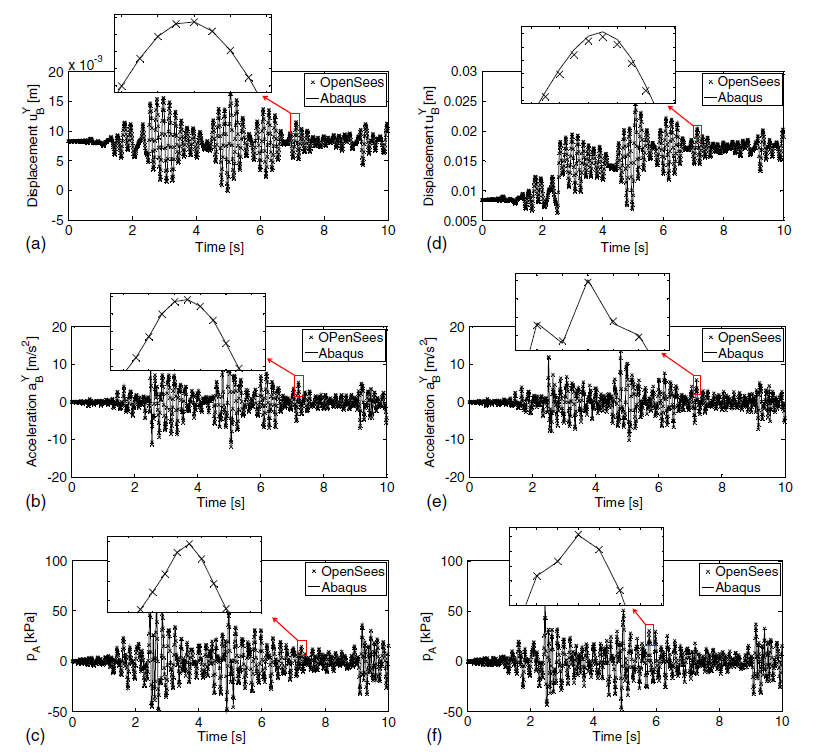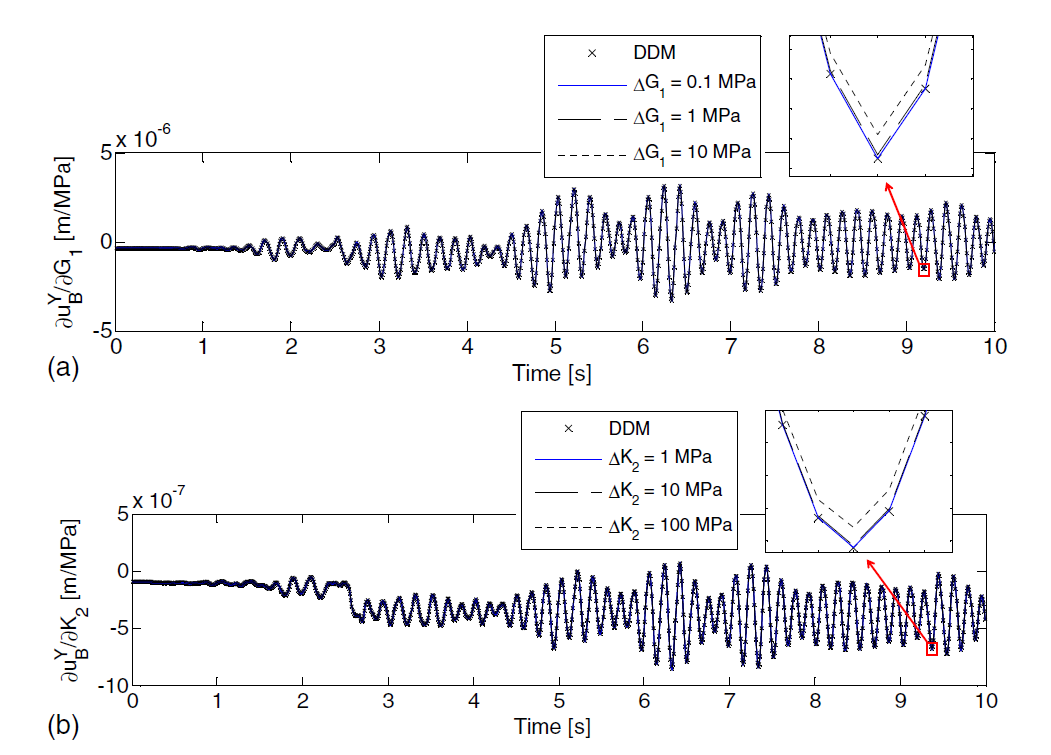Example 5: A realistic dam-reservoir-foundation coupling system subjected to earthquake base excitation: Difference between revisions
(Created page with 'Created by: <span style="color:blue"> Quan Gu (Xiamen University, China), Joel P. Conte (UCSD), Michele Barbato (LSU), Yong Li (UCSD)</span> ---- [[Demonstration Exampl...') |
No edit summary |
||
| (One intermediate revision by the same user not shown) | |||
| Line 3: | Line 3: | ||
---- | ---- | ||
[[Demonstration Examples| Return to Sensitivity Analysis Demonstration Examples Page]] | [[Demonstration Examples:| Return to Sensitivity Analysis Demonstration Examples Page]] | ||
---- | ---- | ||
| Line 29: | Line 29: | ||
[[File:Example5_fig4.png]] | [[File:Example5_fig4.png]] | ||
Figure 5 (a) Sensitivity of uB to <math>\lambda</math>1 using DDM and FDM; (b) Sensitivity of | Figure 5 (a) Sensitivity of uB to <math>\lambda</math>1 using DDM and FDM; (b) Sensitivity of PA to <math>\alpha</math>1 using DDM and FDM | ||
[[File:Example5_fig5.png]] | [[File:Example5_fig5.png]] | ||
Latest revision as of 00:40, 16 October 2018
Created by: Quan Gu (Xiamen University, China), Joel P. Conte (UCSD), Michele Barbato (LSU), Yong Li (UCSD)
Return to Sensitivity Analysis Demonstration Examples Page
This example is taken as a realistic dam-reservoir-foundation coupling system subjected to horizontal earthquake (Y directional) loading conditions.
The dam is 42 m high, and the water level is assumed to be at the top of the dam. The coupling system is discretized into 192 concrete brick elements, 576 water brick elements, 1,568 rock brick elements, 812 viscous spring quad elements (on the outward sides and bottom of the foundation rocks), 96 interface elements (between solid and fluid), and 96 elements for viscous boundary (on the outward sides of water). The pressure boundary on the top of the water is p=0.
Figure 1 Finite element model of a realistic coupled dam-reservoir-foundation system
Figure 2 (a) The dam model; (b) Y-directional earthquake loading conditions
Figure 3 Comparisons of nodal response between OpenSees and ABAQUS for linear elastic case: (a) displacement at point B; (b) acceleration at point B; (c) hydrodynamic pressure at point A; for nonlinear case: (d) displacement at point B; (e) acceleration at point B; (f) hydrodynamic pressure at point A
Figure 4 (a) Sensitivity of uB to G1 using DDM and FDM; (b) Sensitivity of uB to K2 using DDM and FDM
Figure 5 (a) Sensitivity of uB to <math>\lambda</math>1 using DDM and FDM; (b) Sensitivity of PA to <math>\alpha</math>1 using DDM and FDM
Tcl Input File Download
To execute this ananlysis in OpenSees the user has to download this input file:
Reference
Gao, Y., Gu, Q., Qiu, Z., & Wang, J. (2016). Seismic response sensitivity analysis of coupled dam-reservoir-foundation systems. Journal of Engineering Mechanics, 142(10), 04016070.




